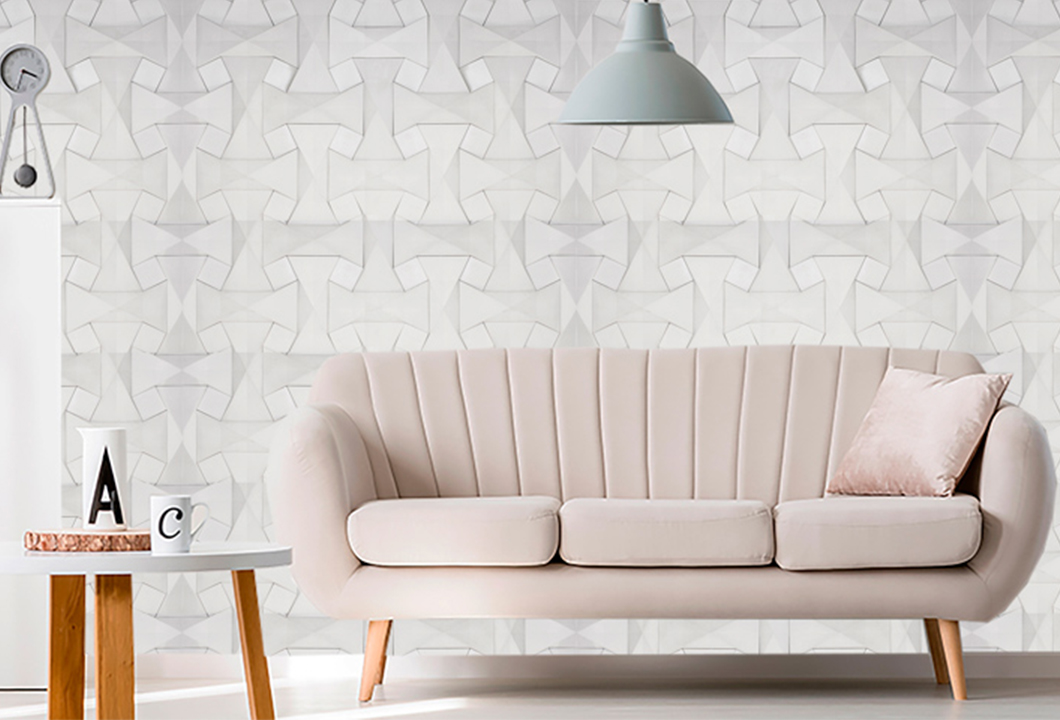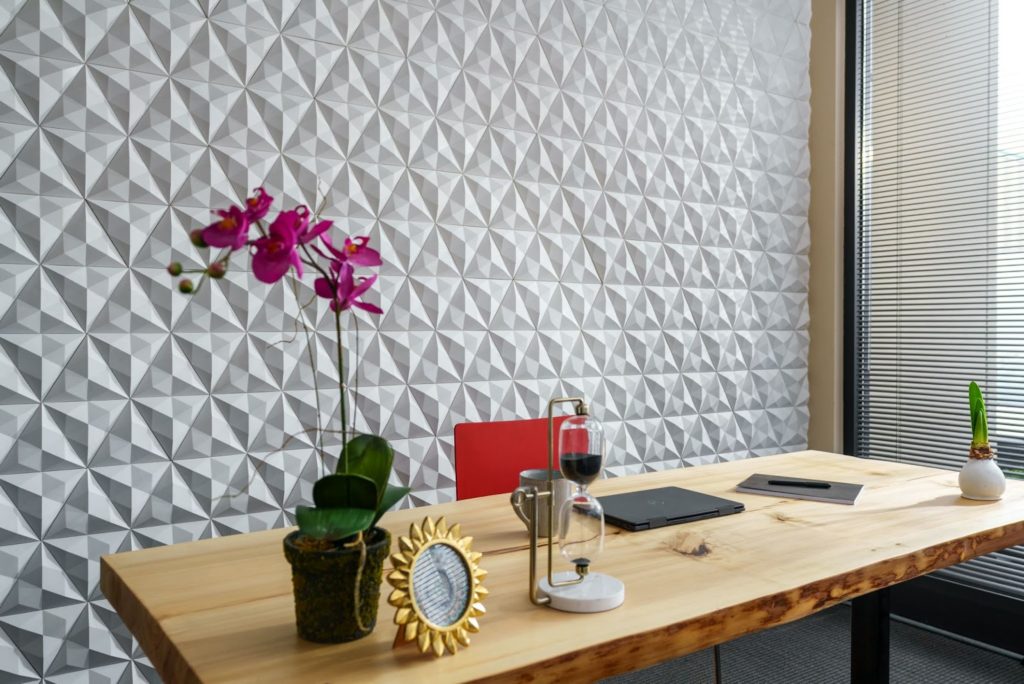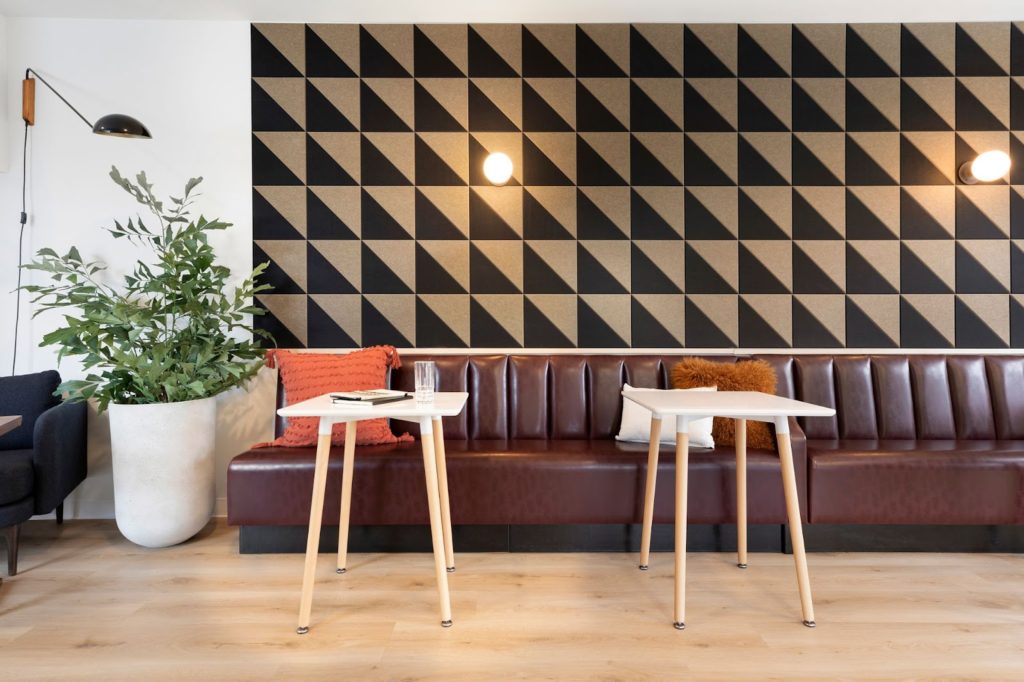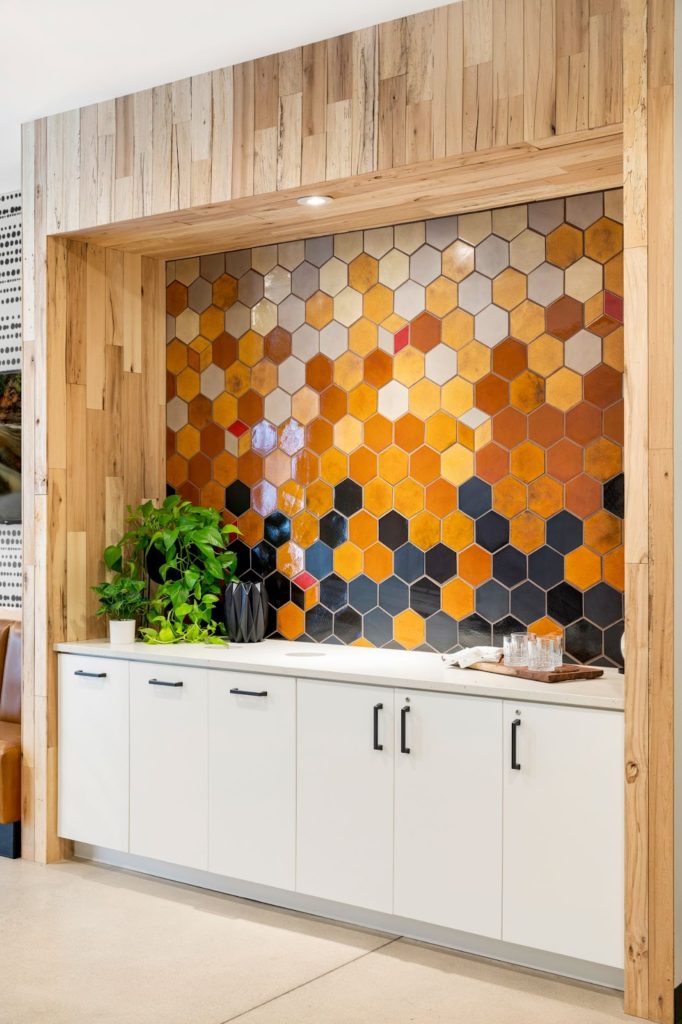
Explore the Wonderful World of Accent Walls
Published:
Last Updated:
Author:

Shannon Hart is the senior interior designer for Minneapolis, Minnesota-based Studio Grey. The studio specializes in creating notable commercial and residential environments using interior design, furniture, fixture and lighting specifications, and coordination of graphic design elements. Shannon shared her thoughts on the ways feature walls enhance spaces, things to keep in mind when planning them, and which Instone materials might be the perfect fit for your project.
No one wants a 0/10 from Room Rater. When staff meetings, client presentations and practically every other aspect of our work lives life migrated to Zoom two years ago, it created a sudden demand for backdrops that looked stylish and professional. Studio Grey received its share of inquiries.
“The requests came in to add some layering, so you’re not just a floating head with a blank wall behind you,” said Shannon Hart, the studio’s senior interior designer. “In those instances, depending on budget, we typically recommend installing a stone wall behind you – something textural but neutral. You want to avoid a lot of red paint or a crazy wall if you want people to focus on what you’re saying.”
Like virtual meetings and many other pandemic-spurred trends, the accent wall is here to stay. Accent walls, also called feature walls, have a separate look than the other walls in a room, creating a visual departure that can bring a space to life.

Artepiso Cedar available from Instone.
“We use accent walls as a way to create rhythm but also to break up a space. In a room with white or simple walls, you can use color, wood, stone, or graphic patterns to add extra texture and layers,” Hart said. “It gives your eye a place to focus on and adds intrigue to the space.”

Pangaea® Westcoast available from Instone adds the WOW factor on this fireplace and accent wall.
Instone offers a variety of options for accent walls, such as its Pangaea® natural stone veneers and Artepiso 3D concrete tiles. Pangaea’s thin stone tiles are striking, easy to install and available in seven natural colors. With dozens of shapes and textures to choose from, Artepiso tiles are versatile, can be painted in solid colors or patterns of your choice, and reflect light in stimulating ways.

The When and Where of Accent Walls
An accent wall can be used in virtually any kind of space, Hart said. When considering one for your home or office, she said a good first step is to think about what the flow of the space is and where the highest impact would be. If people walk by a wall every day without glancing in its direction, it may not be the best outlet for your creative energy.
Know your budget before deciding what materials to use and whether you’d like to cover the full wall or just a section, Hart said. It also helps to think ahead about your long-term goals for the design. Paint or wallpaper accent walls are simple, inexpensive and can be switched easily down the line, while stone arrangements can last and maintain their beauty for many years.
“Consider how long you want to be in the space and how often you’re willing to switch it out. If it’s something that’s bricked in, that’s got mortar behind it, that’s a more intensive install. If I were to recommend a stone, I’d say lean toward something neutral that won’t age itself if it has a specific style to it,” Hart said, adding that Pangaea’s natural black, grey and white stones are excellent options.
As an alternative to the stone, Hart said many of Artepiso’s 3D tiles can be used to project a fun and kinetic environment – perfect for a tech office or modern commercial spaces, for example. Some of its more natural shapes, like the half-circle Amazons, would be great choices for a home accent wall.
“Geometric shapes are very energetic, if you will, so I think they might be best in a more lively setting,” Hart said. “You can keep the natural shapes for your own soothing spaces if that’s what you prefer.”

Building Accent Walls Around Existing Features
Hart said there’s no reason why you can’t create accent walls around existing features like windows and fireplaces. Removing old mantels and dressing up the fireplace with new materials can make a huge impact on the room in a cost-effective way. However, she cautions that the variety of materials used should be minimized to avoid the wall looking chaotic, especially if you plan on adding accessories such as artwork and framed photos.

Geometric accent wall. Design by Studio Grey and photographer Spacecrafting.
Some of her favorite uses of accent walls were in Studio Grey’s design in the commons areas of the Trademark Apartments, a student-centered complex located near the University of Minnesota campus. Mosaic tiles from a local manufacturer were used to add dressing and color in a mailbox wall area that was functional but not pretty. The project employed plenty of natural features, like an accent wall in the lobby with faux moss panels planted between wooden columns that gives the feel like you’ve entered a forest.

Geometric accent wall. Design by Studio Grey and photographer Spacecrafting.
For a society that spends so much of its time in built environments, Hart said you can’t go wrong by bringing a bit of the outdoors indoors.
“There’s a reason Mid-Century Modern is so popular right now. There’s a lot of natural, soothing shapes and materials in there, so lean into that and lean into that we’re people on a green earth and share our nature. We all need a little soothing in the times we’re in,” she said
